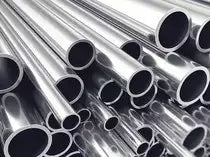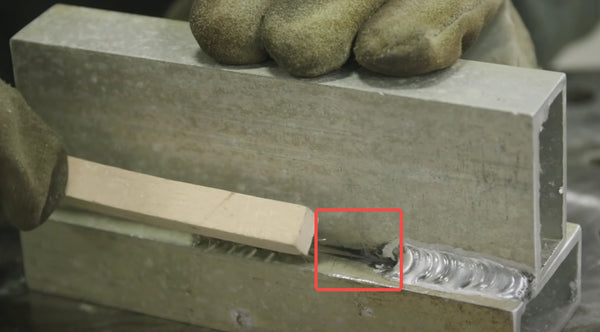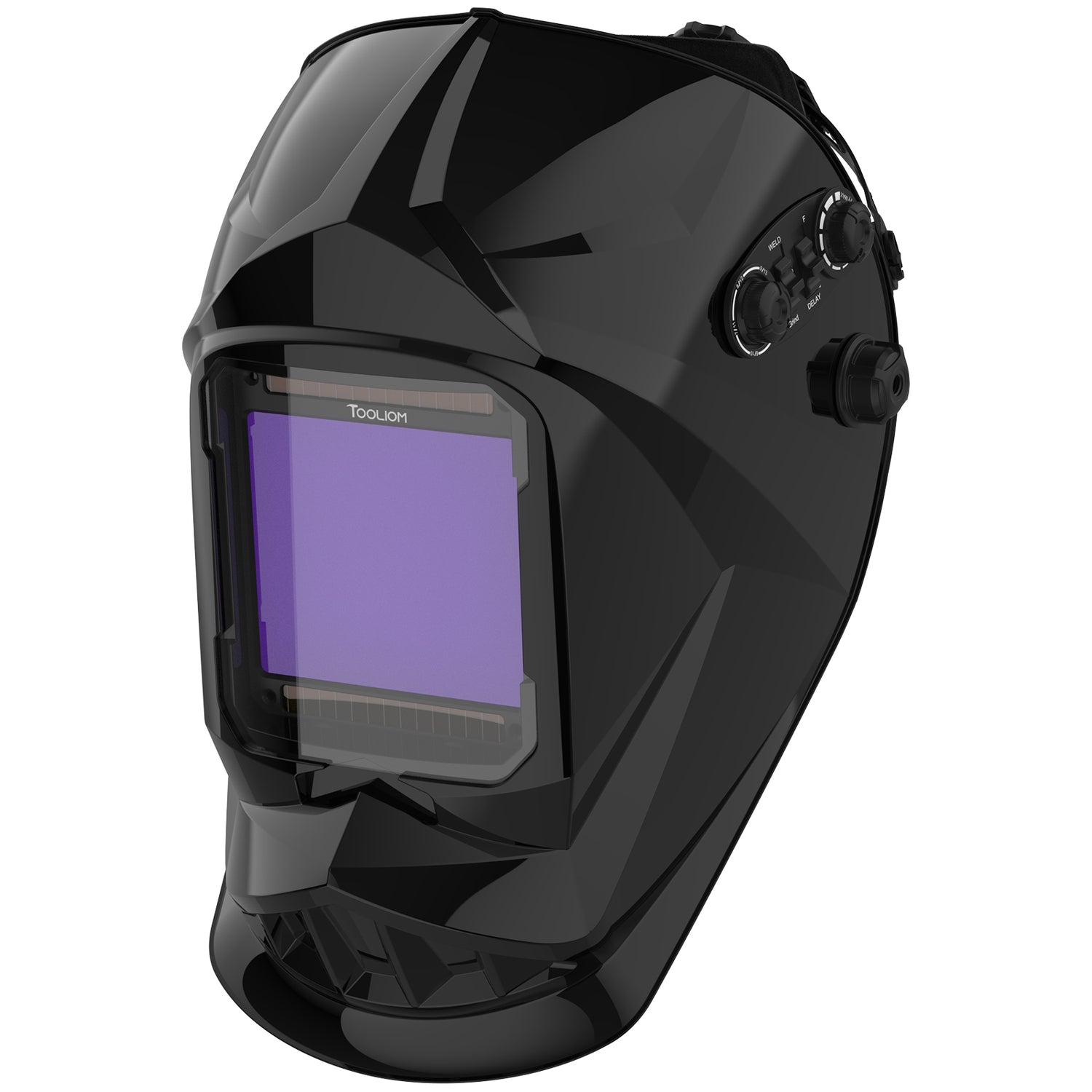There’s no getting around this unpleasant fact. Aluminum welding can seem daunting at first, especially for beginners. Sure, industry newcomers are likely going to work with steel when starting out. It’s the most common base material in the world for a good reason. At some point, though, a non-ferrous job will come up. It’s inevitable. Aluminum is the king among non-ferrous metals, and when not welding steel, beginners are bound to find themselves faced with a job like this sooner or later.
Let’s make it sooner, and let’s do so with confidence. Don’t let the initial learning curve limit a journey that’s going to take your career to new heights, where you’ll be exposed to all kinds of fascinating learning opportunities. Learn the basics of MIG (Metal Inert Gas) welding aluminum for beginners, plus a bonus handful of advanced techniques, today.

Why Is Aluminum MIG Welding A Source Of Concern For Beginners?
Starting with a comparative look at base metal properties, it’s not hard to see why this career pathway has gained something of a bad reputation. Unlike steel, a metal that has a melting point of roughly 1400 °C, aluminum melts at a lower temperature of 660°C. That’s a huge gulf of a temperature gap. Stuck in the mentality of steel welding, it is easy to improperly manage the arc heat and destroy the aluminum welding joint.

Source: https://www.quora.com/What-happens-when-you-heat-metal-and-it-melts
That’s particularly true for novices. Still undergoing training and lacking experience, they don’t yet have the necessary skills to expertly manipulate a MIG welding electrode. They can’t quite control the huge quantities of thermal energy discharged by their equipment arc yet. That’s the reason for the intimidating reputation, then, the knowledge that the lightweight alloy doesn’t tolerate arc heat well. It warps, buckles, and bends when too much thermal energy is discharged by amateur welders who don’t quite know their craft.
The key to MIG welding for beginners is to compensate for its material quirks. The popular non-ferrous metal conducts heat six times faster than steel, and it has that low melting point to overcome. It also develops a thin oxide layer when exposed to the atmosphere, which implies a need for pre-weld cleaning. To cut things short, here’s a list of issues beginners will encounter when working with a MIG welding machine on an aluminum job.

Source: https://nordholding.bg/en/news-en/types-non-ferrous-metals-recycle/
| Burn-through defects |
 |
| Porosity problems |
 |
| Stress cracks |

|
| Weld discoloration |  |
| Smut build-up |  |
| Thermally-induced warping |  |
| Fusion deficiency difficulties |
 |
A cursory scan of the above list highlights words like “problems” and “difficulties.” Burn-through will occur on thinner workpieces if the heat produced by the MIG arc can’t dissipate. Cratering and pinholes will appear because of the unique chemistry of the alloy. Ultimately, aluminum alloys are chemically sensitive metals, and they have to be treated accordingly. Now, having listed a few of the metals’ shortcomings, it’s past time for a deeper look at what welders do best, which is to use the right equipment and the experience that they’ve gained in their career as a journeyman. There’s no reason why, with a little guidance, a beginner can’t reach that skill level.
A Solutions-Based Approach To MIG Welding Aluminum For Beginners
Before all else, clean the site where the weld is going to be applied. Clean oils and dirt from the area. Next, there’s still a thin film deposited on the workpiece. It’ll have to go. That oxide layer occurs because the metal has a natural affinity for oxygen. It binds with the atmospheric elements to create a surface layer that interferes with the arc. Point of fact, the oxide film melts at 2000°C. Underneath that film, the pure aluminum melts at 660°C. Use a steel wire brush, one that isn’t contaminated with ingrained particles from an earlier job. Those trace elements act as porosity-causing impurities. Stick with a dedicated brush.

After the prepping phase and the ‘know your base metal’ strategy, there comes the moment of truth. Let’s say the beginner selects a Tooliom welding machine. He pairs this with Tooliom’s own auto-darkening welding helmet, complete with an American eagle design (TL-EF9242B). For that moment of truth to yield good results, settings on the control panel of the equipment are incredibly important when working with a temperature-sensitive non-ferrous alloy.
Auto Darkening Welding Helmet TL-EF9242B | Blue Eagle|Tooliom
Is the correct cylinder of shielding gas selected for that non-ferrous metal? The ideal match is a bottle of 100% pure argon. It’ll prevent atmospheric contaminants from seeping into the weld pool. Okay, so far, the prep work might seem laborious, but it’s already gone a long way toward preventing porosity problems caused by the low flow rate of the shielding gas or the presence of site humidity. Simply put, hydrogen gas penetrates the weld pool when good welding practices aren’t observed. By cleaning the weld pool site and ensuring adequate shield gas flow, hydrogen contamination issues are eliminated.
Continuing on from the above, current and voltage settings are adjusted so that weld bead workability is maintained. The current should be high enough to maintain arc stability but not so high that turbulence is generated in the pool. If this occurs, the turbulent pool will trap gas. All-in-all, the selected equipment needs to include a range of tunable settings. The more capable of fulfilling this set of functions, the more likely an aluminum weld will look aesthetically pleasing and mechanically sound because it’s free of all of the problems listed earlier.

Photo by @rockvillemetalworks
Beginner Beware: Selecting Optimal Filler Metal For Aluminum MIG Welding
The control panel on the MIG equipment can do just about everything, but it can’t go out and purchase the filler wire. That job is left to the experienced eye of a welder. As such, always take the properties of the base alloy into consideration. For example, 2000 series metals alloy a small percentage of copper. Manganese is similarly alloyed in 3000 series metals. Consider this when selecting a matching filler wire.
Thankfully, there’s a general-purpose filler wire, a spool of ER4043. Paired with the Tooliom 150A spool gun, this combination produces a workable weld pool. The only thing left to do after entering the equipment settings and fitting the spool gun is to set the feed speed. Another handy tip worth knowing here is that additives are often present in fillers. As a helpful pointer for late beginners, ER4043 incorporates a silicon additive. This supplement promotes weld pool liquidity. Other wire types favor alternate welding situations. For instance, ER5356 spools, although still classed as a general-purpose filler wire, are typically utilized on 5000 series projects. Incidentally, series 5000 alloys are alloyed with magnesium to create a popular corrosion-resistant family of non-ferrous metals, which serve well across a wide variety of commercial and industrial applications.
Spool Gun 150A for TL-250M|Tooliom
Beginner Friendly Starting Points Favor Off-Project Practice Habits
That’s right, much though a keen novice might wish differently, they can’t just jump into a new project, not when their skills are still raw and undeveloped. Lacking heat management experience, their first job on this touchy alloy could, at best, result in an unpleasant finish. At worst, the job could end up a full-blown burn-through disaster. No, novice aluminum welders should be working on their first clean butt welds and corner joints on junk pieces of metal. They should be off in a corner, perhaps while being overseen by a seasoned pro, welding lap joints and tee welds on test alloy pieces.

Source: http://industrial.store.shoppiko.com/blog/article/different-types-of-welding-joints
The same can be said of sheet aluminum and heavier gauge pieces. With sheet metal, practice that clean stitch welding technique again and again until it’s perfect. For the heavy gauge piece, there are stringer beads and weave patterns to learn. They must be completed without error before the welder can even think about working on a real-world job. By the way, has the novice cleaned the test pieces before they started working on their welding patterns and push technique? It’s a good idea to treat all of those junk scraps like they were a real project. As such, they need to be prepped. Clean then of oils, grease, and dirt. Next, use a dedicated steel brush to carefully scrub away the oxide film covering the pure base aluminum underneath.

Source: https://m.roadkillcustoms.com/mig-welding-for-beginners-three-basic-welds-you-should-know/
If a practice routine for a beginner is going to be incorporated into their training program, then it should be done with an all-in dedication to detail. Treat it like a real job; clean and prep the test pieces before starting a jointing or stitching run.
Graduating From Early Beginner Aluminum Welders To Late Beginner
Recapping what has been covered so far, aluminum alloys dissipate heat at a faster rate than steel. The metal also has some unusual chemical properties, including an affinity for oxygen. A heat-resistant film forms over workpieces when they’re exposed to the atmosphere. There’s also a series chart that novice welders need to be aware of if they’re to get the most out of the weld pool on a job. Fine-tuned equipment settings, filler metal selections, weld site prepping strategies, and more, early beginners have a lot to deal with when they’re introduced to their first non-ferrous project.

Source: https://www.youtube.com/watch?v=PWDYmhuHUxs&t=10s
On progressing to late beginner status, welders can expect to have a better understanding of the basics. These semi-pros understand how to manage weld beads, know how to intelligently solve porosity difficulties and potential burn-through roadblocks. They’re aware of the tendency for bird-nesting in soft feed wire metals, can adjust the tension arm of their equipment’s drive roller so that a 1-mm thin wire doesn’t tangle. They even know how to replace the regular equipment liner with a graphite liner, which will ensure a trouble-free feed. Running smoothly, all the way to the nozzle, the wire is manipulated with precision, without tangle, without pushback.
There are times, especially as skills develop when a welder utilizes equipment manual settings. When that time comes, when a complete beginner graduates to a late beginner, they’ll know the ins and outs of the 1xxx and 3xxx series and perhaps even the 5xxx series, too. They’ll set the control panel voltage, adjust wire travel speed, and tap in a DCEP (Direct Current Electrode Positive) polarity that produces a stable arc.

Source: https://awo.aws.org/glossary/direct-current-electrode-positive-dcep/
Closing Thoughts
Arguably, by saying that beginner MIG welding an aluminum base metal piece is difficult, a falsehood is being reinforced. Yes, the metal is loaded with chemical differences and a low-temperature melting point that can confound novice welders. However, as long as that newcomer is aware of these differences, a properly biased, non-ferrous heavy skills development methodology can develop.
So, beginners will adopt that synergic mode when matching voltage settings to travel speed. They will fit a graphite liner and employ their own tangle-resistance tactics when evolving their wire management skills. And they’ll certainly practice every detail, from weld joint type to position required, plus the dirt cleaning and oxide film scrubbing prep work that’ll set them up for success. More than this, though, the multitasking muscle the beginner exercises will inevitably be transformed into a state of productive independence, which means a time will soon come to access the equipment’s manual modes.

Source: https://www.youtube.com/watch?v=k-YF0AaGvmk
From spray transfer modes to voltage/transfer speed configurations, the aesthetics of the work, and the underlying strength of the weld joints, all of these will undoubtedly improve and shine as skills mature. So, yes, aluminum welding can indeed be tough on beginners, but the right equipment and a dedicated learning pathway soon tame those challenges.

GMAW spray arc transfer
Source: https://www.researchgate.net/figure/GMAW-Spray-Arc-Transfer-4_fig3_324730944
Aluminum MIG Welding For Beginners - FAQ
Q: What problems beginners will encounter in aluminum work?
- Burn-through defects
- Porosity problems
- Stress cracks
- Weld discoloration
- Smut build-up
- Thermally-induced warping
- Fusion deficiency difficulties
Q: For beginners, what knowledge should be mastered to learn aluminum MIG welding?
- Learn about the properties of aluminum
- Cleaning work before welding
- Choose the right equipment
- Correct settings of the device
- The right protective cylinder
- Suitable for fillers for aluminum MIG welding
- Cleaning after welding
Q: What is most important in the learning process?
A: The most important thing is the mindset and constant practice. When you encounter problems, you can search for information on the Internet and consult professionals.




